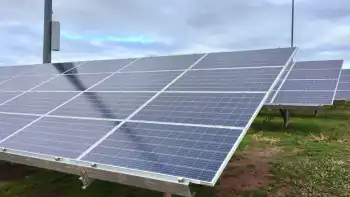New Zealand to proceed with Te-Uku wind project
The windfarm will be on private land in Wharauroa Plateau near Raglan, about 30 kilometers from Hamilton.
The project will be developed in partnership with Waikato Electricity Distribution Company (WEL).
WEL operates a 5,000-kilometer transmission network, which carries electricity to about 84,000 homes. Upon completion, the 64-megwatt (MW) windfarm is expected to provide electricity to about 30,000 households. The project, which is considered to be the first windfarm in the Upper North Island, will improve energy security in the region.
Nationally, wind power projects are becoming a popular choice as a backup source for hydropower generation. New Zealand, which relies heavily on hydropower sources for electricity generation, is focusing on developing windfarms to provide power during dry seasons. Recently, the West Wind windfarm averted a power outage by supplying about 60 MW to the Wellington region, after equipment at the Hayward substation failed.
About 70% of the country's energy requirement is fulfilled by hydropower sources. In the recent past, hydropower projects have been facing stiff opposition from environmental bodies and activists on account of the impact of these projects on the flora, fauna, wildlife and ecology of the region. Several projects, including the Waitaki hydropower project, the Mokihinui River project, and the Wairau hydro project, were delayed or suspended due to opposition from environmental agencies.
About 2,000 MW of wind power projects in New Zealand are in various stages of approvals and clearances. Recently, Meridian Energy announced that all 62 turbines of its 142-MW West Wind project had commenced operations. The Long Gully wind project, developed by Mighty River Power Limited and Windflow Technology Limited, also has received approvals. The total wind power generation capacity in the country is about 500 MW. With the proposed Te-Uku and other projects, the total wind power capacity is estimated to reach 575 MW. Global wind power statistics indicate that at the beginning of this year, the total wind power generating capacity worldwide was about 120,000 MW.
Meridian Energy is one of the biggest energy-generating utilities in New Zealand, generating about 30% of the country's energy needs. The company has the unique distinction of using only renewable energy sources for power generation. Meridian Energy is also New Zealand's only supplier of "CarbonZero" fuel. The CarbonZero certification has been developed in New Zealand in adherence to internationally acknowledged greenhouse gas emission measurements. Meridian Energy owns and operates three windfarms and nine hydropower stations. As of June 2009, the company generated 4.2% of its electricity from wind and 95.8% from hydro sources.
Meridian Energy is also proposing to develop a 630-MW windfarm with up to 176 turbines on private land, about 70 kilometers from Dunedin. An environmental hearing on this project was completed in February. A decision on clearances is expected shortly.
The company is also setting up the 71-MW, 31-turbine Mill Creek wind project at Ohariu Valley. Environmental clearance for this project, which can provide electricity to 35,000 homes, is awaited.
Meridian Energy is also developing the Ross Island wind energy project, which is touted to be the world's southernmost renewable energy project. The windfarm, which is expected to be completed by 2010, will provide power to the American base and New Zealand's Scott base. The project also will link the electricity grids of the bases and help in reducing carbon-dioxide emissions in the Antarctic region.
Recently, New Zealand announced plans to reduce greenhouse gas emissions by 10% to 20% of 1990 figures by 2020. Experts indicate that this target is in line with those of the U.S. and Japan, two of the world's biggest emitters. New Zealand is one of the few countries outside the European Union, working on developing a national emissions trading initiative. A parliamentary committee review of the emissions trading package is under way. About 50% of the country's carbon dioxide emissions come from the agricultural sector, which accounts for about $29 billion of the country's export earnings.
Related News

Sens. Wyden, Merkley Introduce Bill to Ensure More Wildfire Resilient Power Grid
WASHINGTON - U.S. Sens. Ron Wyden and Jeff Merkley today introduced new legislation to incentivize utility companies to do more to reduce wildfire risks as aging power infrastructure ignite wildfires in Oregon and across the West.
Wyden and Merkley's Wildfire Resilient Power Grid Act of 2020 would ensure power companies do their part to reduce the risk of wildfires through power system upgrades such as the undergrounding of power lines, fire safety equipment installation and proper vegetation management.
"First and foremost, this is a public safety issue. Fire after fire ignited this summer because the aging power grid could not withstand a…




